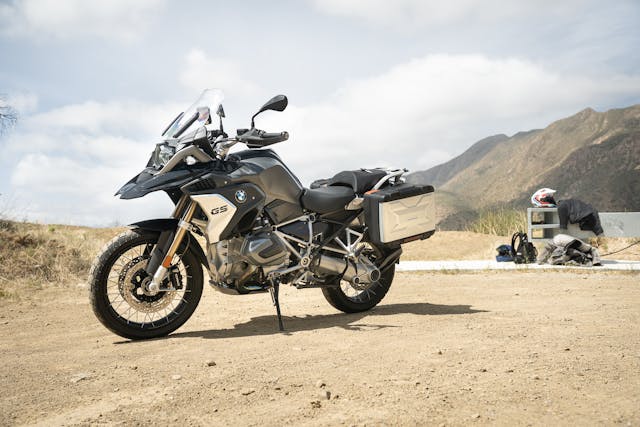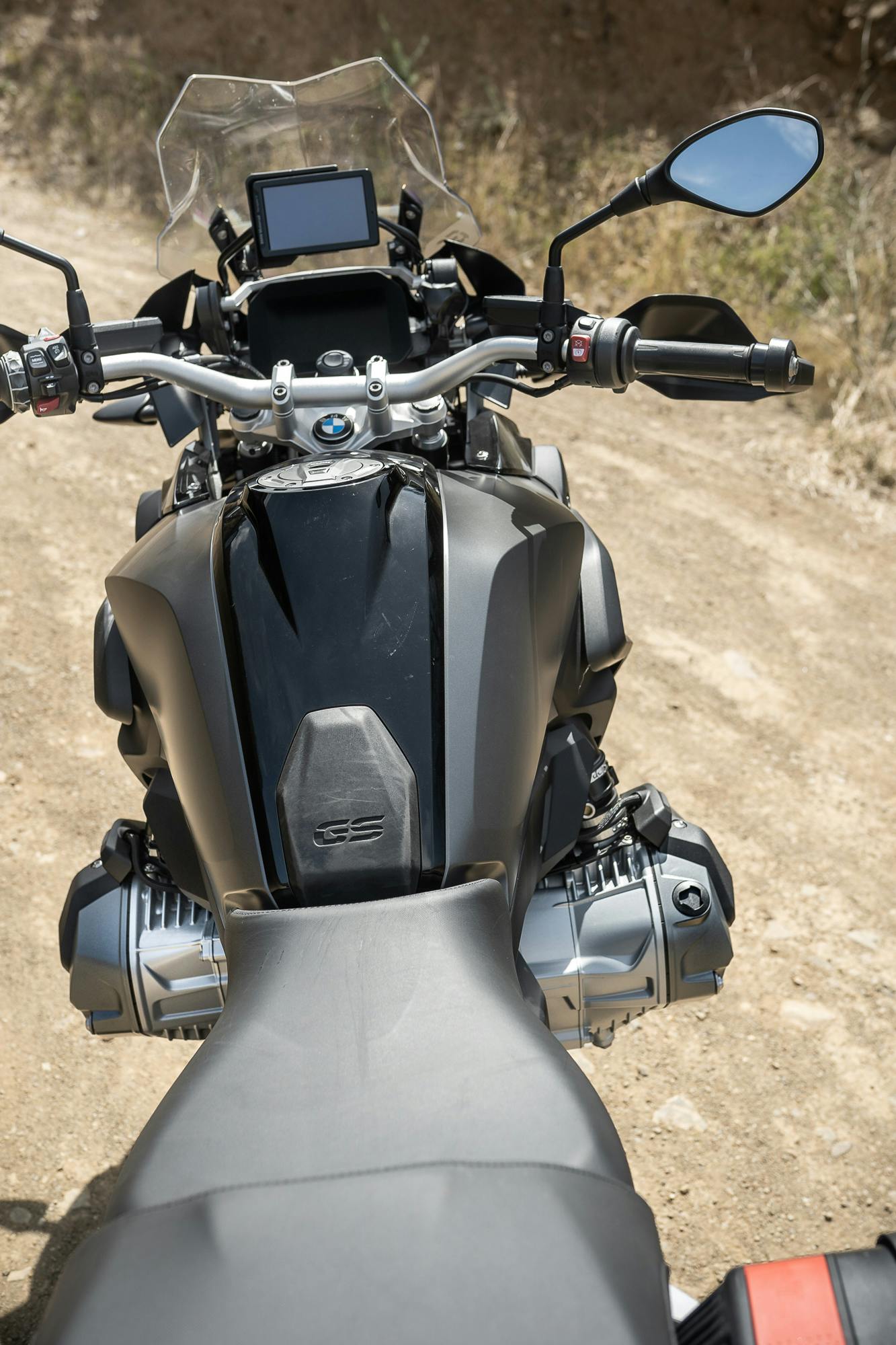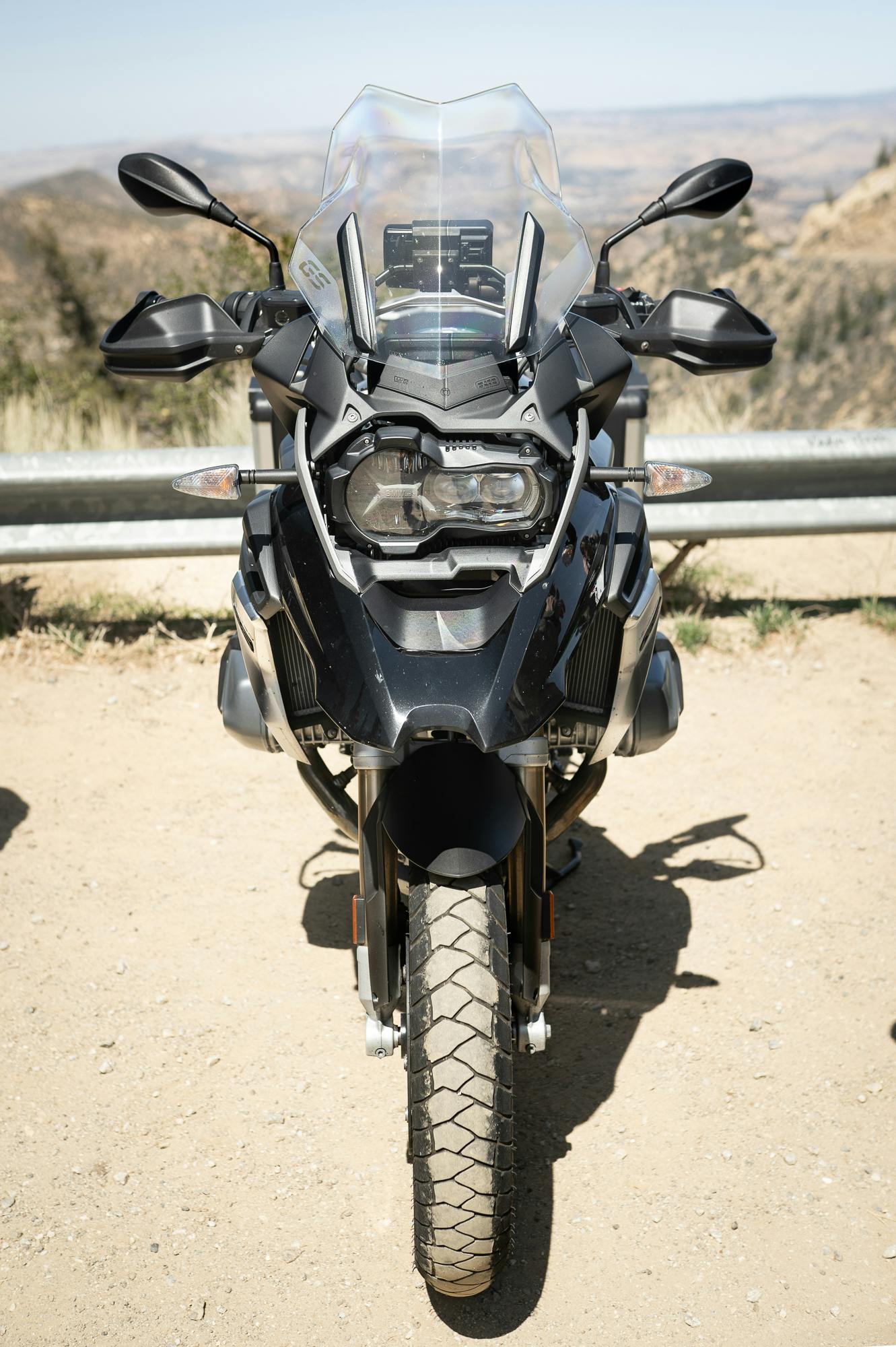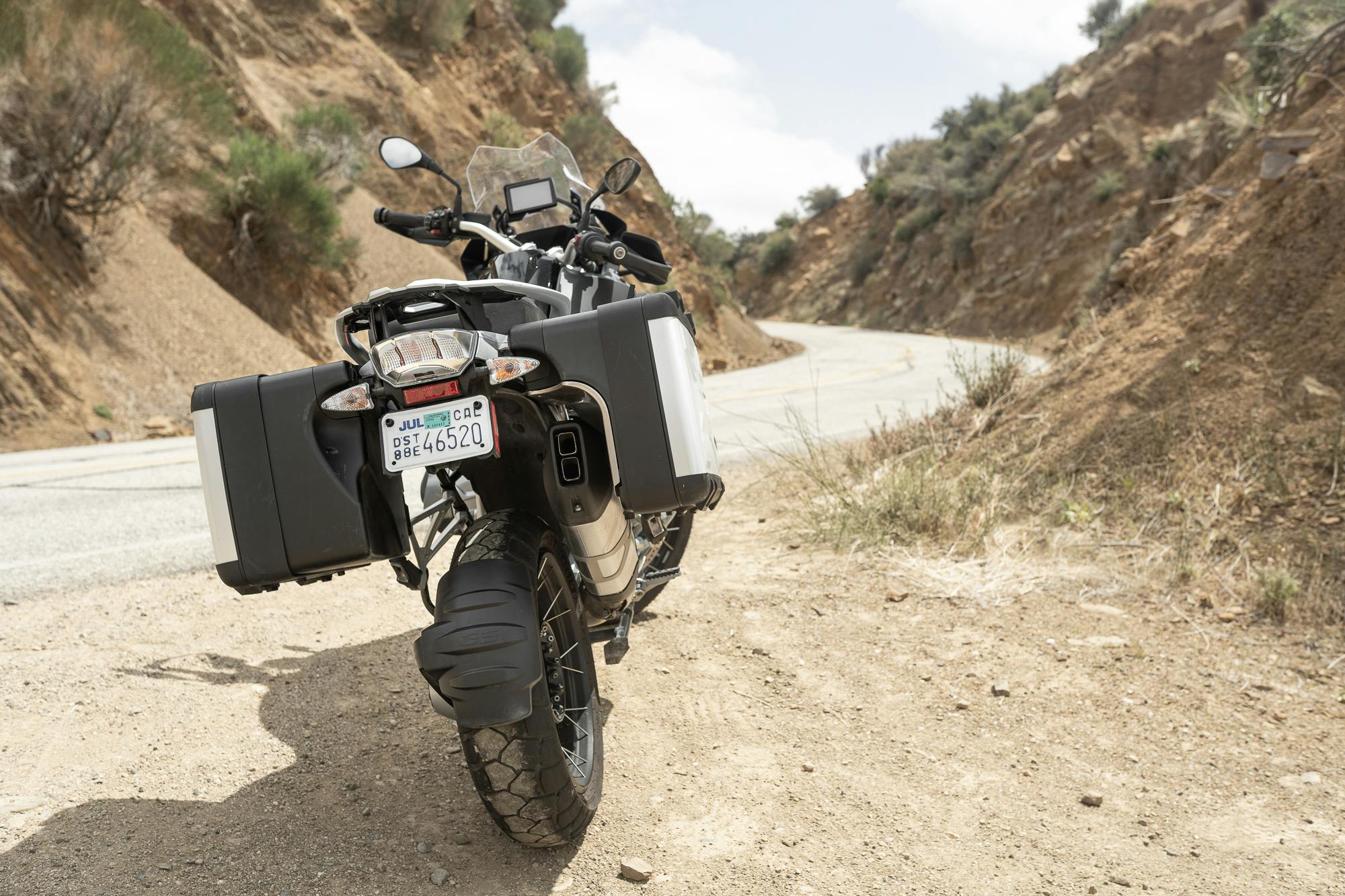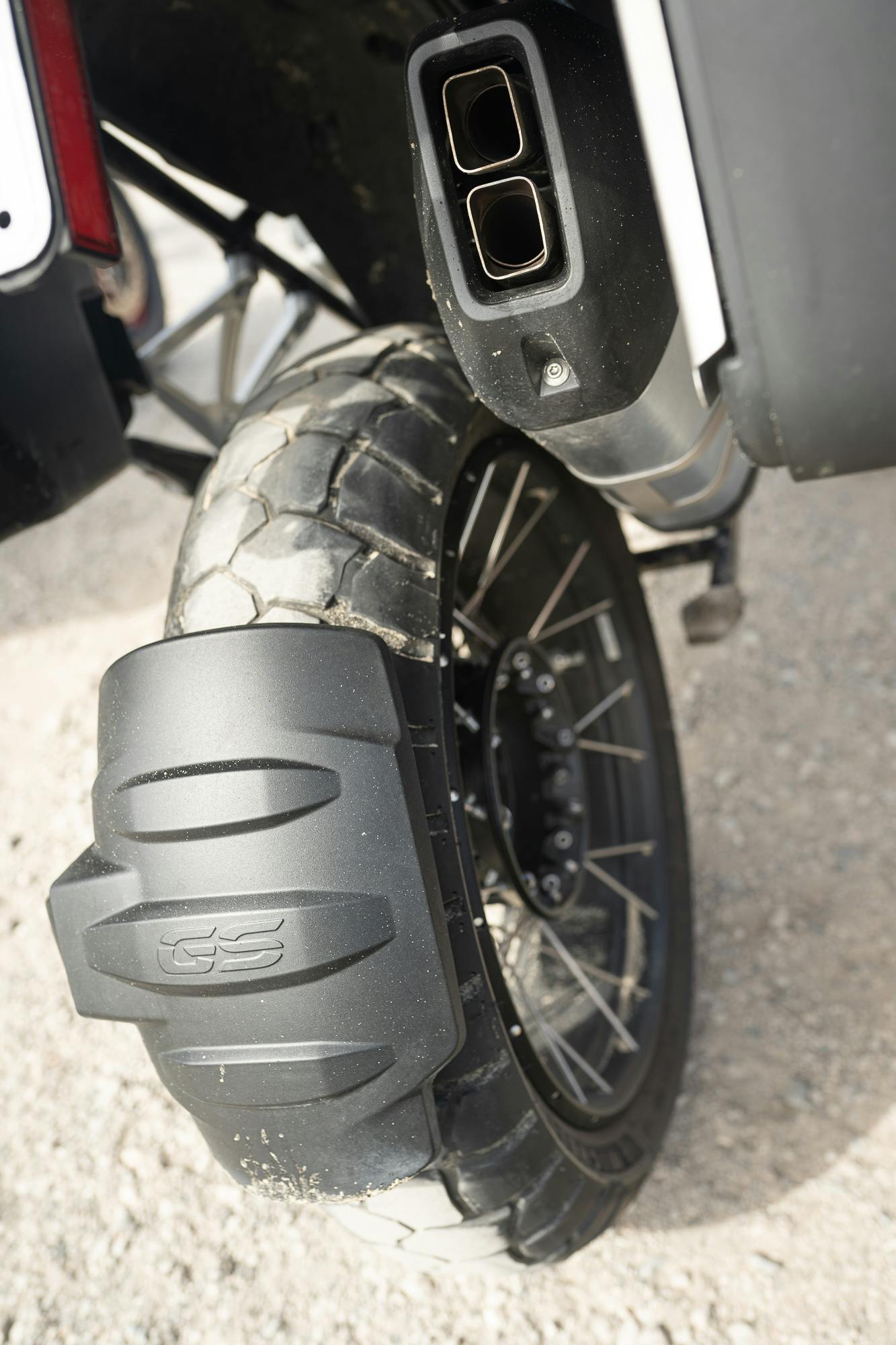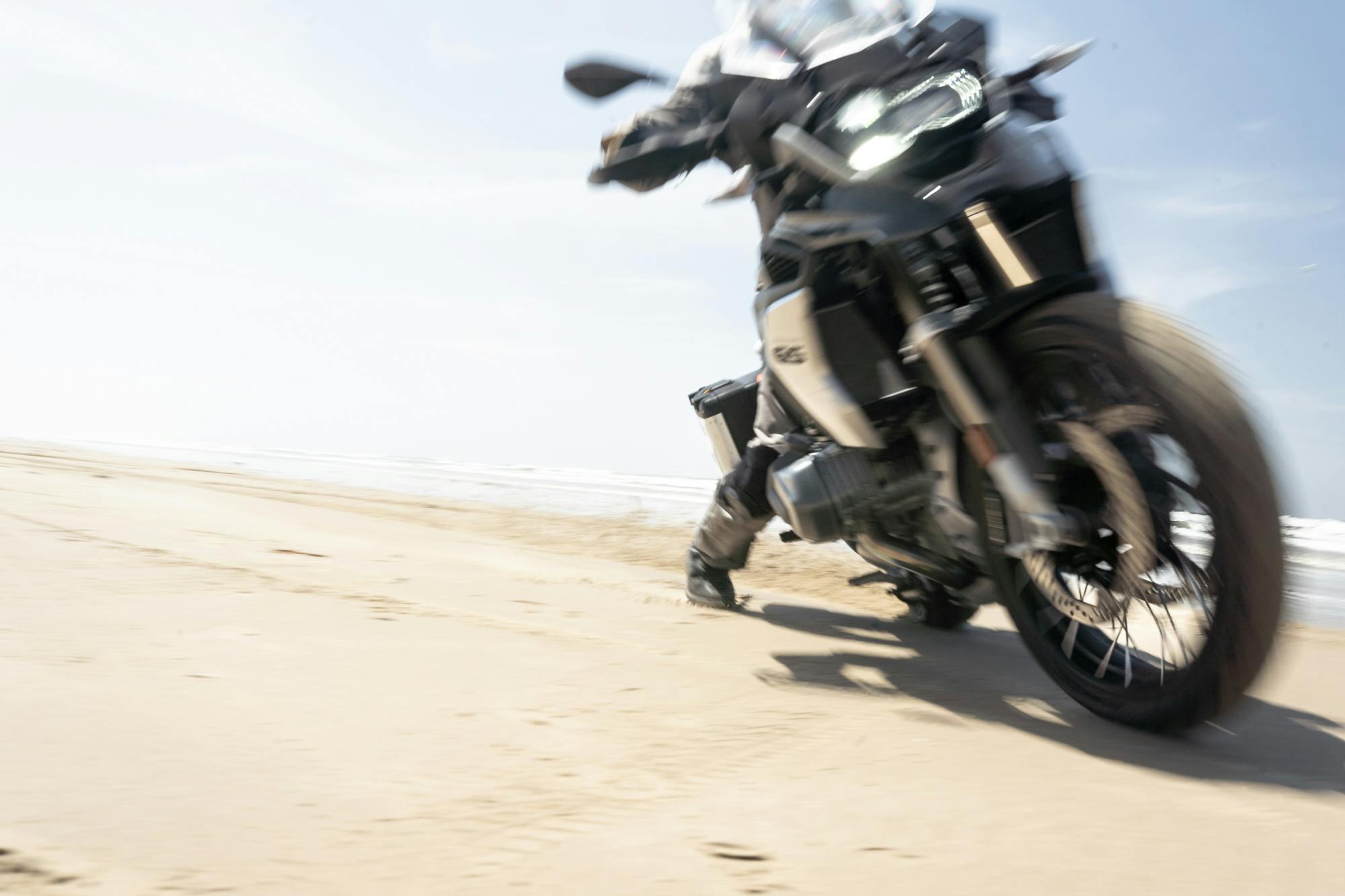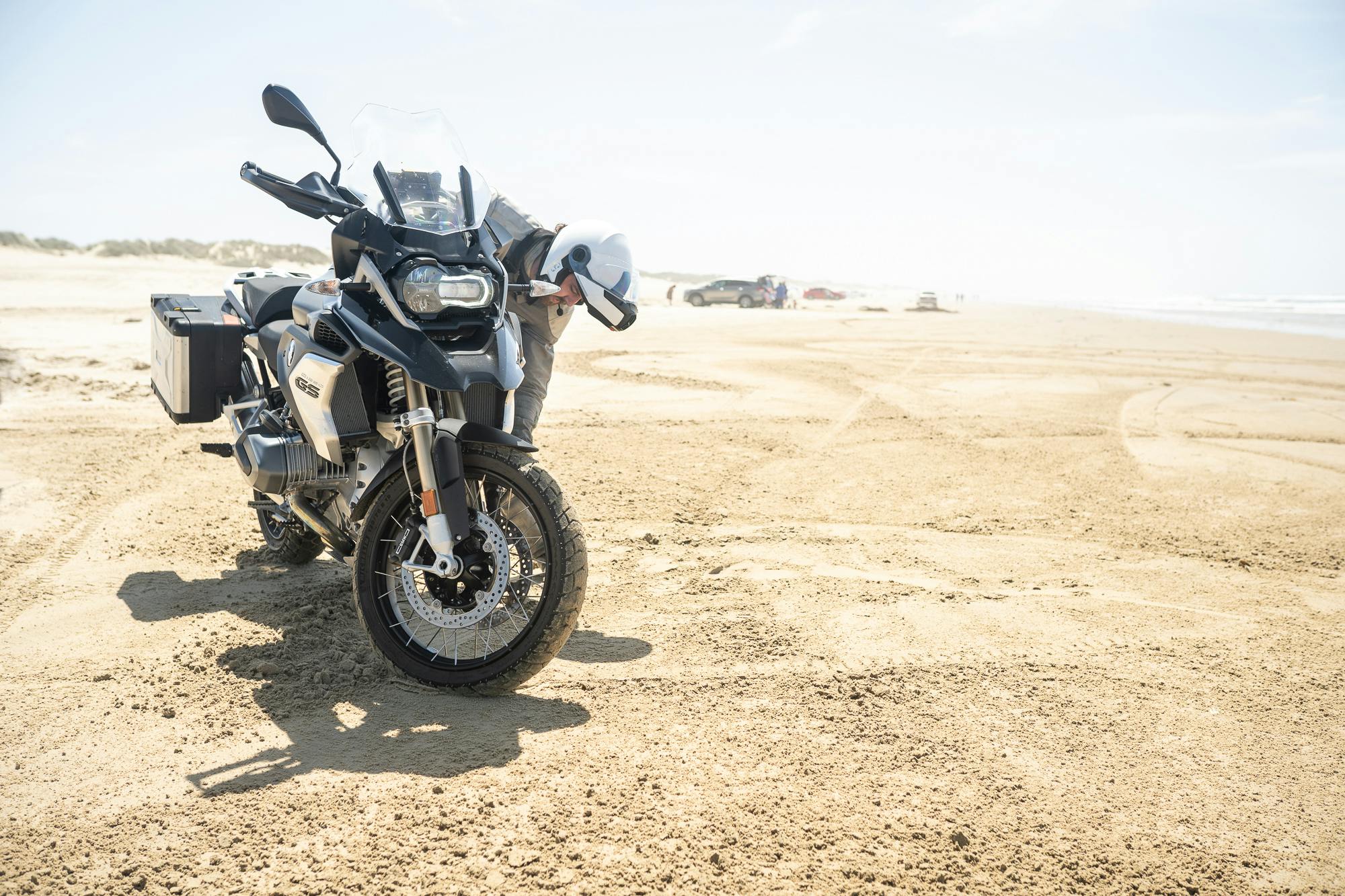Review: 2021 BMW R1250 GS
A century ago, a small group of Bavarian engineers decided to power their new motorcycle with a flat twin—two horizontal cylinders in the breeze, combustion chambers near the rider’s shins. This engine was also a boxer, each rod running on a dedicated crankpin. Power was sent to the rear hub by a slender driveshaft and a small final drive, the latter tucked away in a sealed housing.
At the risk of extreme understatement, 100 years ago was not now. Motorcycles of the 1920s were generally tall and top-heavy, and few were effectively cooled. Boxers tend to carry their weight relatively low, which can help handling, and cylinders in open air are usually more temperature-stable than those tucked under a fuel tank. Next to a chain, a driveshaft and sealed final are relatively low-maintenance. The sensible result was more riding and less wrenching, but also a durable machine less likely to wilt under big miles or hard use.
The combination effectively built a company. One hundred years later, when many of those problems are basically solved, BMW still makes shaft-drive boxer bikes. The reason is likely a cross between tradition and buyer affection, or perhaps just a Bavarian fondness for vintage recipes, as with beer. Which is not to imply that a serious international corporation still builds an expensive consumer product to ancient template because drinky time, but who doesn’t like picturing a little war council of German engineers yapping about flat cylinders for hours in some halle simply because somebody forgot to close the taps? Hans has a new way to meet emissions without big weight? Crack another weizen keg, Max—we draw blueprints to morning!
Silly image, sure. But what is any motorcycle if not happy fantasy?

Witness the BMW R1250 GS. GS stands for Gelände and Straße, off-road and street. In 1984 and 1985, the factory took those words to Paris-Dakar and won. The letters have since appeared on dozens of torquey and long-lived machines, including the 2004–2012 R1200 GS, one of the best-selling motorcycles in BMW history. Seventeen years ago, Ewan McGregor and Charley Boorman took two boxer GSes around the world for a TV show. As with all motorcycles, the appeal is equal parts ability and dream—what you will do crossed with what you might do, or at least, what you wish you could. People buy these things for trips to Death Valley or Patagonia, but also because they want to chew up interstate on piece of story that can make a Jeep Wrangler feel soft.
A GS doesn’t have to be a boxer or shaft-driven, but the 1250 is the flagship, so tradition dictates both, plus a certain recipe. The model also wears a clever front suspension, which BMW calls Telelever; a clever rear suspension, dubbed Paralever; a stout trellis frame; and a state of tune best described as forgiving potent. It all adds up to something like a Swiss Army knife, if a folding multitool could somehow love big distance at big speed over junk surface.

The current model, the R1250, was unveiled in fall of 2018. In 2021, it weighs 549 pounds without luggage. For a big adventure bike, this is neither heavy nor a bag of helium. The twin-cam, water-cooled, 1254-cc twin at its heart wears a six-speed gearbox with a wet clutch and produces 136 hp at 7750 rpm. Peak torque is 105 lb-ft at 6250. Redline sits at 9000, a number so far past the powerband that you chase it only to avoid a midcorner shift, or because you dig barky turbine snarls that make your amygdala itch. The previous boxer GS, a 1200, was no slacker, but the current model is noticeably snortier, smoother at high rpm, and more willing down low.
People say stuff like that in reviews all the time, but the change here is real and strong, grunt with a bullet. At no point between 1500 and 8500 rpm does the bike make less than 70 lb-ft, a gift partly attributable to BMW’s new Shift Cam variable-valve-timing system. Variable valve timing is nothing new, but the 1250’s iteration is a impressively compact landing of the form, a sort of German take on Honda’s VTEC. At high load, a solenoid uses a grooved “shift” drum to shunt each intake cam forward, offering each of the engine’s four intake valves a second and more aggressive lobe. The result is extra duration—the valves open sooner and close later—and an increase in valve lift of more than 50 percent. The system is seamless and helps the bike clear Euro 5 emissions standards while also boosting flexibility and raw punch. You can rumble through traffic all low-rpm velvet, or you can sky the front wheel for longer than should be possible with a machine shaped like a large and substantially disco metal tree.
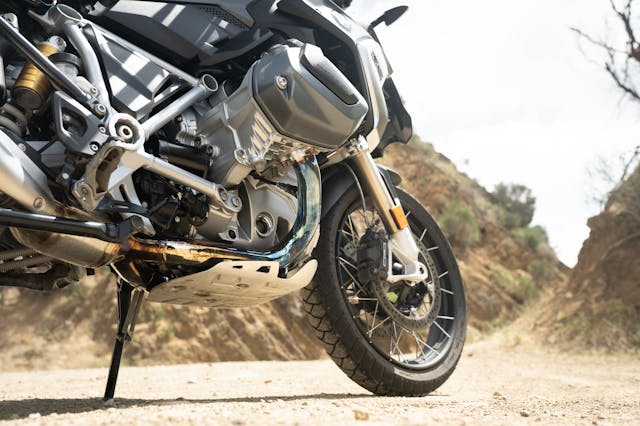
Maybe you don’t own the skills for such hooligan business. Thankfully, the Germans have you. This is not a simple machine. Stability control, ABS, and automatic hill-hold are standard. So are two switchable ride modes controlling driveline and chassis behavior. Order the Premium package ($3925), you get hand guards and pannier mounts but also a quickshifter; traction control; keyless ride; cruise control; lean-varied (a.k.a. cornering) ABS; heated grips; a tire-pressure monitoring system; dynamic brake assistant (sudden hard braking automatically closes the throttle); and semi-active, load-compensating suspension. If that weren’t enough, the Premium pack also brings five additional riding modes, with multiple ABS and stability calibrations for dirt and pavement but also digital assistance during wheelies and slides.

All of that is nice to have and worth the money. Depending on your skill level, it will either make you far more comfortable with a bike of this size or prompt you to go everywhere like a sausage-filled bat out of hell. Either way, you’ll feel taller and smarter and be totally convinced that your current haircut is the best on earth.
The trick here is the old combo of seemingly infinite suspension travel and friendly talent delivery. The BMW shrinks at speed, whip-cracking into lean in a way that defies the comfort on hand or the mass at work. Slalomy corner transitions pop, and those wide bars help you elbow into corners like a dirt freak or make small adjustments without thinking. That strange-looking front suspension reduces bar kickback and virtually eliminates dive; the geometry isolates forces in a way that nudges you to focus on the holistic whole of quick riding. You ride faster than you told yourself you would, simply because everything seems so easy, every midcorner bump gone to vapor. Even the seat is all-week comfortable.
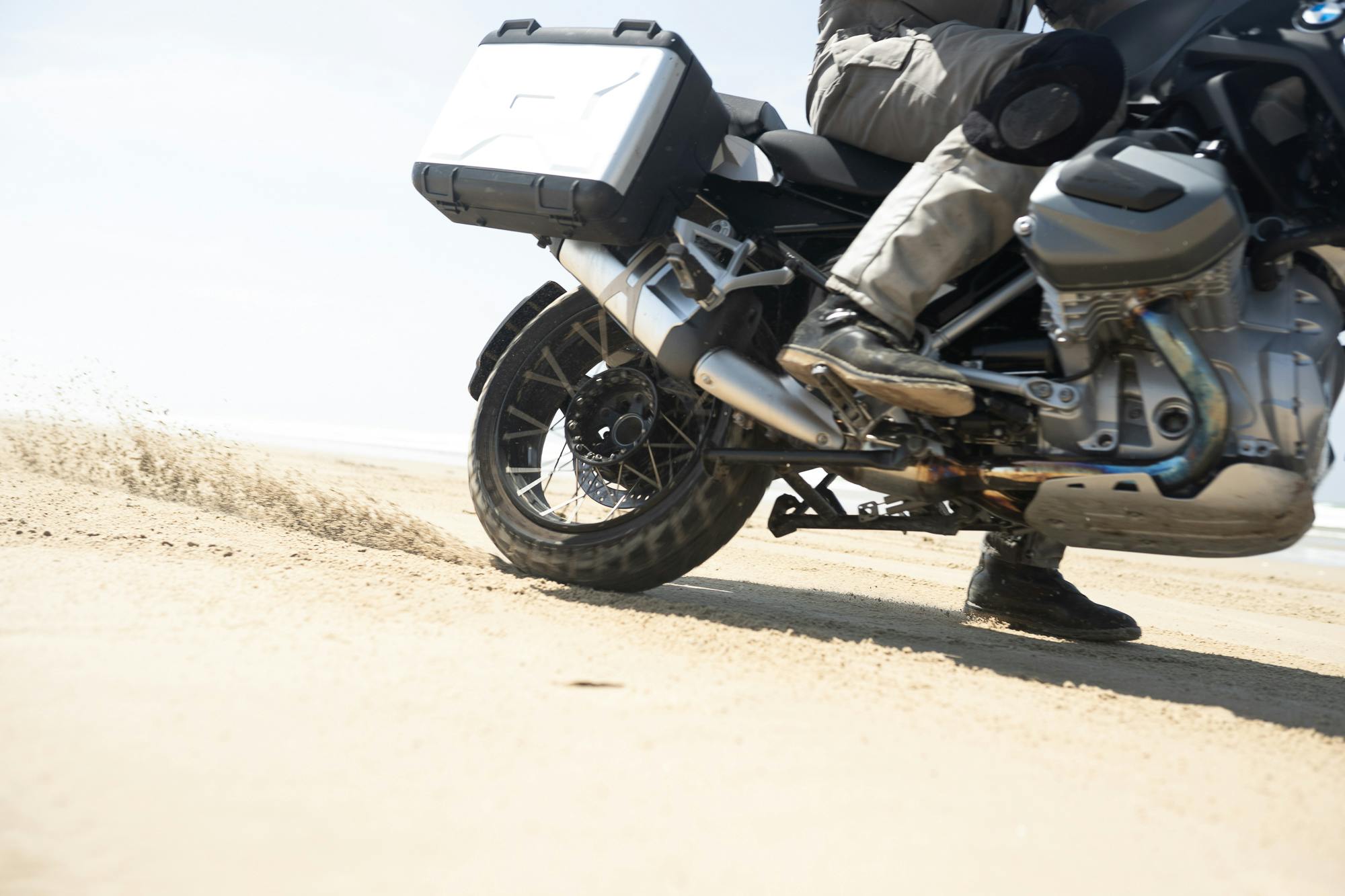
Predictably, these talents don’t come cheap. The cheapest 1250 GS starts at $17,995. After a few miles, you either shrug at the buy-in because the result seems worth it—GS resale trends high for a reason—or you find the whole mess too heavy and complex, unacceptable evidence of modern bloat.

A reasonable person could argue either side, but seat time aids understanding. On that note, I will now hand you over to the words of Hagerty friend Sean Smith, a fiendishly quick and veteran motojourno we invited on this test.
A few days after I returned the BMW to its minders, Sean texted me a brief round of notes. I enjoyed those notes very much and now excerpt them here:
The GS literally backs itself into corners. Brake and come in, second gear, the bike does the rest. It’s not electronic wizardry, just physics and geometry arriving at their inevitable conclusion. Over a 500-mile day, the BMW will beat you up far less than most motorcycles, allowing you to ride more at eight, nine, or even ten tenths, sending it straight to Gnarnia, lighting up the rear tire leaned over in fourth. Try that stuff on most bikes, you get a moon-shot high-side.
It’s hard to put your finger on BMW’s chassis trick, but it’s like they used a special golden mean for motorcycles to determine all their measurements.

Most of us don’t ride like Sean, but speed is irrelevant. What matters is how the GS eggs you on for goon work while also loving any other task at which one could reasonably aim a motorcycle. Twelve-hour highway days, dirt single-track, two-up hauling? You feel like some all-knowing pro in a secret club, even if the only hoon thing you’ve done all day is order that frappaspresso with triple sugar.
Motorcycles exist for that mental escape. This one is great partly because it feels born of a specific place and people. Folks who may do things their own way, but who want, most of all, for you to ride long and fast and well, objections of surface or tailbone out the window.
What a dude, that Hans. Long may he weizen.
***
2021 BMW R1250 GS
Base price/as-tested: $17,995/$22,915
(Premium package, spoked wheels, basic side cases, nav unit)
Highs: A comfy and fast freight train that loves corners, dirt, and travel.
Lows: Not cheap or light. Robotic space-bird styling can be divisive. The technology/chassis/boxer-shaft combo can be an acquired taste.
Summary: A charming revamp of a classic name, and still a king among adventure bikes.
